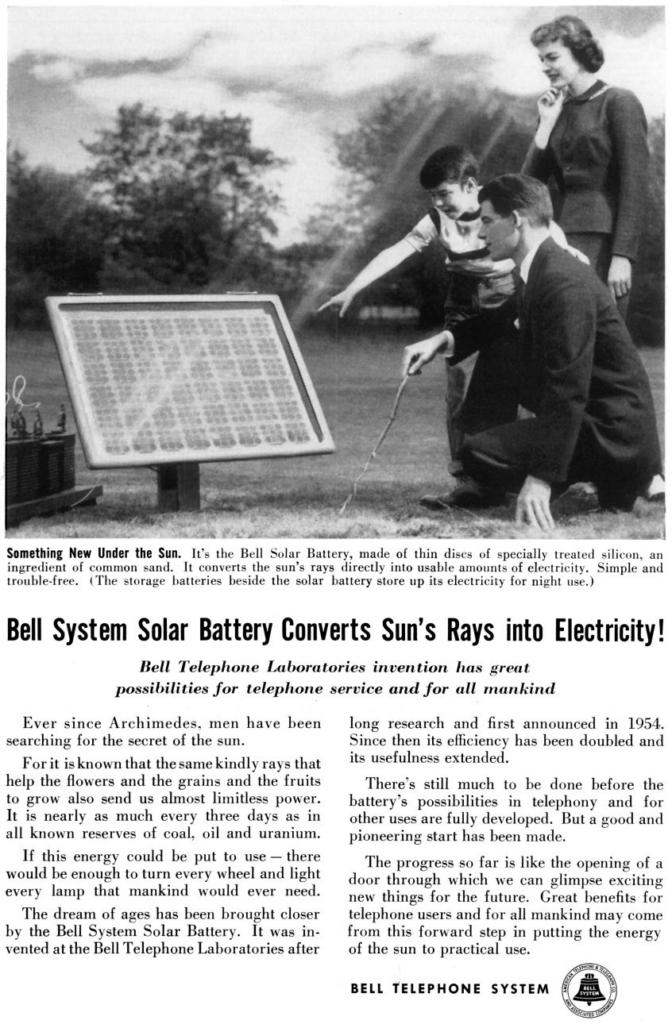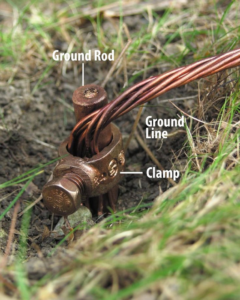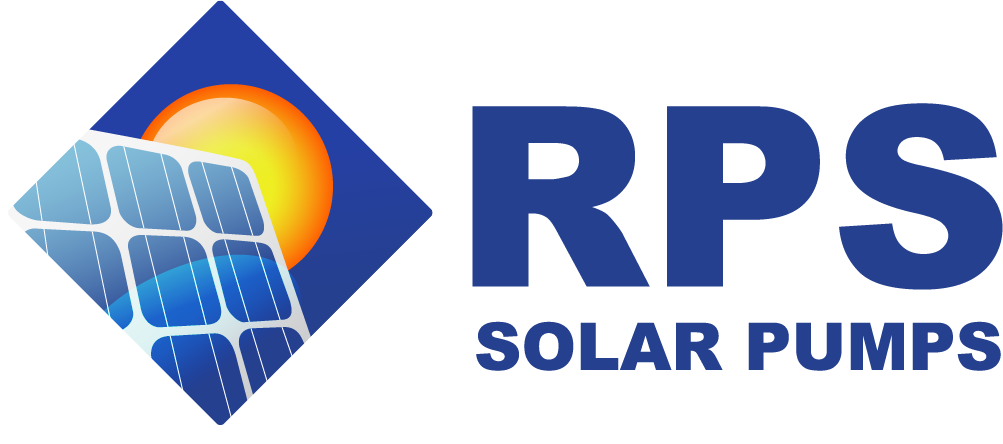
VOLUME III
November 2022
Introducing the Ranch Water Gazette. We’re here to de-mystify solar pumping and support every off-grid water journey – without the need for a power company. Our monthly publication is a collection of educational and timely information about water access, pumping, solar, ranch power and water independence from around United States of America – inspired by all the amazing customers we serve here at RPS Solar Pumps. We’re honored to serve you and become a teammate in your solar pump planning and installation.
HISTORY OF SOLAR PUMPING
Since ancient times, humans have been putting the sun to work! From the Greeks and Romans to the Anasazi people of the Pueblo region of the US, we’ve been harnessing sunlight and altering our home spaces to take full advantage of the sun’s energy.

How did solar panels come about?
The first proper photovoltaic solar panel was developed by Bell Labs in New Jersey by inventor Daryl Chapin in 1954. But before then, many other scientists and inventors developed the building blocks for the solar technology we have today.
Some of these include French scientist Edmond Becquerel who discovered the photovoltaic effect in 1839 and Charles Fritts, an American inventor, described the first solar cells made from selenium wafers.

Solar since the 1950’s
Throughout the 1950s, the efficiency of solar cells kept on increasing, from 8% in 1957 to 14% in 1960. In the 1960s, the first telecommunication satellite TelStar 1 launched by Bell Labs feature the most cutting edge solar cells into space.
Since 2008, solar power has become increasingly popular as a renewable form of energy, as its price became affordable to a much wider market.
When was the first solar water pump used?
We believe it to be in 1913 on the outskirts of Cairo, when an inventor from Philadelphia named Frank Shuman built the world’s first solar thermal power station, using the abundant Egyptian sunshine to pump 6,000 gallons of water a minute from the Nile to irrigate a nearby cotton field.
6,000GPM?!? That’s a lot of water!

These days, solar technology for solar pumping is improving and becoming more affordable all the time! Here at RPS, we’re excited to be a part of putting the sun to work and helping others learn about it, and implement it on their farms and ranches.

THE FUTURE OF OFF GRID STORAGE
24V AND 48V BATTERY BANKS
With most electronics being based on a 12V system, why would upgrading to a 24V or 48V system make sense?
Why not a 12V system?
Off-grid solar systems have been around for a long time, and the original standard systems were almost all 12V. We get a lot of customers wondering why our systems are all at least 24V or 48V, since they’re used to 12V as the standard of RV’s and off grid houses.
For small or existing systems, we can agree that 12V might still be fine, but new installs or for medium to large projects consumers are transitioning over to using 24V or 48V for cost effective, more efficient setups (made possible by readily available 24V and 48V controllers from the online marketplace).
Here’s a 48V Battery Setup on one of our recent installs in Tennessee.

Batteries Prefer 24V and 48V
24V and 48V systems battery banks are expanded first by adding units in series before adding a second or third string of batteries in parallel. In contrast, 12V battery banks can only expand by adding units in parallel.
When many small batteries are connected in parallel only it can cause issues as the voltage can become be uneven with losses from the connectors and terminals. This can lead to early replacement.
All system components of a solar pump like to be at a more efficient higher voltage. Higher voltage means less work for charge controller, slightly higher efficiency and less wire loss.
Read more about why 24V and 48V setups are the future!
RPS 24V systems: TPP, RPS 200, Watersecure 3k
RPS 48V systems: RPS 400, RPS 800, RPS 400N, Watersecure 6k and Watersecure 12k


SOLAR PANEL F.A.Q.
EVERYTHING YOU’VE BEEN ASKING
Looking for help with your solar panels?
The most common question we get this time of year is how to angle solar panels for maximum production in the winter months. The ideal sites for your panels are in full sun all day without shadows. You’ll want the panels to face True South. The optimal ‘Tilt’ angle of the panels is based on your latitude and season. Check out our seasonal tilt angle calculator to find your ideal tilt. Make sure that snow stays off your panels as well so you’re getting plenty of power. Don’t use a snow shovel on the surface of your panels though, just a soft mop or squeegee will do.
Have any more burning questions?
Give our pump specialists a call or visit our full Solar Panel F.A.Q. page for more answers.
SOLAR WATER PRESSURE TANKS
ASSEMBLY AND INSTALL
What is a pressure tank?
When considering pressure tank assembly it is important to know what a pressure tank is, and when to use one. Pressure tanks don’t require any electricity, their internal water bladder fills and compresses purely using pressure. The pressure tank can be one of the main components of a well system, along with the pump, pressure switch and the well itself. It stores water from the well and supplies it to your home at an appropriate pressure.
In most homes the pressure tank is responsible for the level of your water pressure. Pressure tanks are offered in a variety of sizes, from 5 gallons up to 200 gallon or more. For any off-grid solar pumping application we recommend purchasing the largest pressure tank you can find, as the larger tank will act as an above ground water storage resource and the pump won’t have to turn on as often.
Also check out a blog post here and Mike explaining everything you need to know about pressure tanks in the video below.
CUSTOMER OF THE MONTH:
HEIDI, Nevada
NEVADA – This story comes from our homesteading friend, Heidi! Heidi purchased herself an RPS400 and a Tankless Pressure Pump and are using them to irrigate her Nevada Homestead! Heidi we loved this video so much, thank you for being such a loyal part of what makes RPS great!
NRCS GRANTS WITH RPS PUMPS
Here at RPS , we’ve designed a special line of “NRCS Ready” Solar Pumps that adhere to every documented requirement for NRCS EQIP Grants. If you’ve considered applying for a grant for a solar water pump for your herd or crops, we can help you with the process! Every NRCS solar pump project goes through our NRCS Sizing & Documentation Form and receives engineering diagrams, engineering stamps, pump curves, warranty information and more ahead of meeting with your local engineer.
The first step is to contact your local NRCS office. An NRCS conservation planner will schedule a visit to your property and talk with you about your conservation goals and the scope of your project. Once you’re started, we’re here to help you find the perfect solar pumping setup for your grant. We’ve done NRCS projects in over 37 states and counting and have pumps up to 250 HP available!
RPS Project Partners Include: Arizona BLM ● Arizona Dept Fish and Game ● CA Dept Fish and Game ● Nevada Dept of Wildlife ● North Dakota Dept Fish and Game ● Tennessee Conservation Service ● Ute Tribe Fish and Wildlife ● US Bureau of Reclamation ● Wyoming BLM
Feel free to give us a call with any questions and one of our pump specialists can get you on the road to getting funded!


NRCS EQIP Funded Solar Pump for 500 foot Well in North Carolina: Watch Now!
25 RED FLAGS ONLINE BUYER’S GUIDE
FOR QUALITY SOLAR PUMPS
Sadly, the last few years have let to a proliferation of Chinese shell companies on US made platforms like Amazon and Ebay, hiding behind made-up, “fly by night” brands that are selling low quality products, claiming warranty and support and then disappearing when reviews get bad or they move on to a next unrelated product. Because it’s easier than ever to get online and sell from overseas, many companies pop in and out of Amazon and Ebay every few months.
We’ve created a 25 RED FLAGS ONLINE BUYER’S GUIDE to arm you with the knowledge to avoid fraud, bait-and-switch, Chinese shell companies, warranty-avoidance schemes like “in-person” requirements, and false claims and specifications online.

Have you thought about buying a cheap system on Amazon? We’ve reviewed the top Amazon “companies” for you so you have all the facts! You’ll be amazed at what we found.
GROUNDING YOUR SOLAR PUMP
Something that we get asked often is if you need to ground your solar system. The answer is YES!

Once you have your well pump up and running, it’s important to ground the entire system to prevent damage in the event of a lightning strike and to disperse static electricity from the air.
This is especially important in lightning- prone areas, and a dedicated grounding rod should be installed near the solar panels and controller. If the well casing is metal (and if local code allows), it can be used for an earth ground instead of a dedicated grounding rod.
You can find a detailed explanation of how to ground your system on our website.
RECIPES FROM OUR GARDEN
Jalapeño Cheddar Skillet Cornbread
Serves: 6-8
One of our favorites here at RPS! Everyone’s favorite non-traditional addition to the Thanksgiving table…especially topped with a pat of warm butter.
INGREDIENTS
2 large eggs, whisked
¼ cup vegetable oil
1 cup buttermilk
1 cup cornmeal
½ cup all-purpose flour
2 teaspoons baking powder
½ teaspoon baking soda
1 teaspoon salt
½ teaspoon garlic powder
1½ cups sharp cheddar cheese, shredded
½ white onion, diced (or 5 stalks of green onion diced)
2 medium jalapeño peppers, seeded and diced (approximately ½ cup)
Room temp butter for the final flourish!

Step 1 – Place a greased 8-inch cast-iron skillet into a cold oven. Preheat the oven to 350°F, allowing the skillet to heat up with the oven.
Step 2 – In a medium bowl, combine eggs, oil, buttermilk, and cornmeal. Set aside.
Step 3 – In a separate bowl combine flour, baking powder, baking soda, salt, and garlic powder. Whisk together until combined. Pour the egg mixture into the flour mixture and mix until well combined.
Step 4 – Fold in cheese, onion, and jalapeños. Carefully remove the skillet from the oven. Pour the batter into the hot skillet. (You can add sliced jalapeños and a sprinkling of cheddar on top for a pretty finished look.)
Step 5 – Bake 45-50 minutes, or until golden brown. (An inserted toothpick should come out clean or with a few dry crumbs.) Let the cornbread cool for about 20 minutes before cutting and serving.
These are also a favorite here at RPS to accompany a homemade pot of chili during the cool Autumn days.
A PEEK BEHIND THE CURTAIN

This rainy Halloween, we all participated in a day of food and games including a pumpkin stacking contest, Halloween trivia and a good old-fashioned game of BINGO!
There was pumpkin pie, clam chowder and all the hot beverages you could ask for. It was a day for all of us to come together and celebrate what we do all throughout the year to bring solar water to all of you!
888-637-4493 RPS Water Assurance™ guarantees you’ll have the right pump before you install! Click to size online or call 888-637-4493
Pump Sizing & Pricing >>

- CORRESPONDENCE FROM THE FIELD -Do you have a news story or update from your part of the world about water, solar pumping animals, farms or ranches? Send a letter to our owners (Mike from the videos is one!) at [email protected], and your insight might be shared in the next newsletter!
40250 County Road 27, Woodland CA 95776 No longer interested in a solar pump? Let us know here
